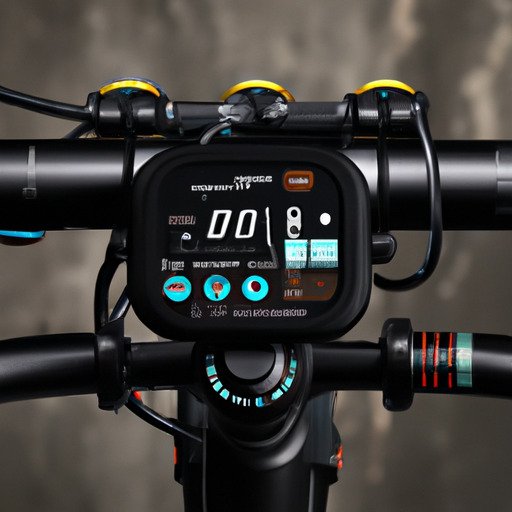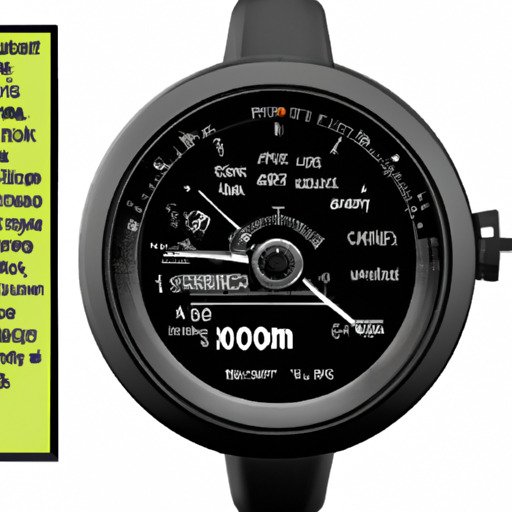
Are you curious about how to keep track of your e-bike’s performance and statistics? Look no further! In this article, we will explore different methods and tools that can help you monitor and analyze your e-bike’s performance, allowing you to optimize your rides and stay informed about your bike’s health. Whether you’re a casual rider or a dedicated enthusiast, tracking your e-bike’s performance can provide valuable insights and enhance your overall riding experience.
If you’re interested in learning more about how to track your e-bike’s performance and statistics, stay tuned! In the upcoming paragraphs, we will delve into various techniques and devices that can help you collect data such as speed, distance, battery usage, and more. From smartphone apps to dedicated cycling computers, we’ll cover a range of options that cater to different preferences and budgets. Whether you’re aiming to improve your fitness, monitor your battery usage, or simply satisfy your curiosity, tracking your e-bike’s performance can be an invaluable tool for any rider. So, let’s dive into the fascinating world of e-bike data and discover how it can elevate your biking experience! If you’re an avid e-bike rider, you understand the importance of tracking your bike’s performance and statistics. Whether you use your e-bike for commuting, leisurely rides, or intense workouts, having access to data about your performance can greatly enhance your cycling experience. In this article, we will explore the benefits of tracking e-bike performance, various methods to track it, key performance metrics to monitor, the importance of tracking e-bike statistics, challenges in tracking, selecting the right tracking solution, tips for effective tracking, comparing different tracking technologies, and case studies on e-bike performance tracking.

Benefits of Tracking E-bike Performance
Improving Cycling Efficiency
One of the main benefits of tracking your e-bike’s performance is the ability to improve your cycling efficiency. By monitoring metrics such as average speed, cadence, and power output, you can identify areas where you can make improvements. For example, if you notice that your average speed is lower than desired, you can focus on increasing your pedaling efficiency or adjusting your riding technique. Tracking your performance allows you to set goals and measure your progress over time.
Monitoring Battery Life
Another significant benefit of tracking e-bike performance is the ability to monitor your battery life. E-bikes rely on a battery to provide assistance while riding, and knowing how much power you have remaining can help you plan your rides accordingly. By tracking metrics such as battery consumption rate and estimated range, you can ensure that you don’t run out of power in the middle of your journey. This is especially important for long-distance rides or when exploring unfamiliar areas where finding a charging point may be challenging.
Tracking Distance Travelled
Tracking the distance travelled on your e-bike is not only useful for personal satisfaction but also for maintenance purposes. By keeping track of the total distance covered, you can schedule regular maintenance and servicing based on manufacturer recommendations. This helps prolong the lifespan of your e-bike and ensures that it performs optimally. Additionally, knowing the distance you ride can also be a source of motivation and accomplishment, especially if you set goals for yourself, such as completing a certain number of kilometers in a specific timeframe.
Methods to Track E-bike Performance
Using Integrated E-bike Apps
One of the easiest and most convenient methods to track your e-bike’s performance is by using integrated e-bike apps. Many e-bike manufacturers offer their own smartphone apps that connect to your e-bike and provide real-time data about your ride. These apps usually display metrics such as speed, distance travelled, battery level, and even GPS location. Some apps also provide features like route planning, navigation, and social sharing, allowing you to connect with other e-bike riders in your area. Integrated e-bike apps are typically user-friendly and offer a seamless experience since they are specifically designed to work with your e-bike’s hardware and software.
Installing GPS Tracking Devices
If you want more detailed tracking capabilities, installing a GPS tracking device on your e-bike is an excellent option. These devices use satellite technology to track your bike’s location in real-time, allowing you to monitor its movements remotely. GPS tracking devices also provide additional features like geofencing, where you can set virtual boundaries and receive alerts if your bike leaves the designated area. This can be particularly useful for theft prevention. Some GPS trackers also offer advanced functionalities such as anti-tampering alarms, crash detection, and emergency SOS buttons. However, it is important to note that GPS tracking devices may require a separate subscription or data plan to function properly.
Utilizing Cycling Computers
Cycling computers have been a popular choice for tracking performance metrics on traditional bicycles, and they can also be used on e-bikes. These devices attach to your handlebars and provide real-time data about your ride, including speed, distance travelled, cadence, heart rate, and even power output. Cycling computers typically utilize sensors and wireless technology to gather and display this information. Some advanced models can also connect to your smartphone or other external devices to sync and analyze your data. Cycling computers come in various price ranges, from basic models with limited functionality to high-end devices with advanced features. Choosing a cycling computer depends on your specific needs and budget.
Key Performance Metrics to Track
When tracking your e-bike’s performance, there are several key metrics you should pay attention to. These metrics provide valuable insights into your riding experience and can help you make data-driven decisions to improve your performance. Here are a few important performance metrics to consider:
Average Speed
Average speed is a crucial metric that indicates how fast you are traveling over a specific distance. Tracking your average speed can help you gauge your overall performance and identify areas where you can increase your speed or efficiency. By setting goals to improve your average speed, you can challenge yourself and track your progress over time.
Battery Consumption Rate
Tracking your e-bike’s battery consumption rate is essential to ensure that you don’t run out of power during your rides. This metric tells you how much energy your e-bike is using per kilometer or mile. By monitoring this metric, you can estimate how far you can go before needing to recharge your battery and plan your rides accordingly. This is particularly important for longer rides or when riding in hilly terrain, as the battery consumption may vary based on the intensity of assistance provided by the e-bike.
Climbing Gradient
If you frequently ride in mountainous or hilly areas, tracking the climbing gradient can provide valuable insights into your performance. Climbing gradient refers to the steepness of the incline you are riding on. By monitoring this metric, you can determine how challenging a particular climb is and track your progress over time. This information can be used to set goals and improve your climbing abilities.
Importance of Tracking E-bike Statistics
Tracking e-bike performance and statistics is not just about collecting data; it holds several important benefits that can greatly enhance your overall cycling experience. Here are some reasons why it is essential to track your e-bike’s statistics:
Maintenance and Repair
By tracking your e-bike’s statistics, you can easily keep track of its maintenance and repair needs. Regularly monitoring metrics like distance travelled and battery consumption rate allows you to schedule routine maintenance tasks as recommended by the manufacturer. Additionally, tracking data can help you identify any performance issues or abnormalities that may require repair or adjustment. This proactive approach to maintenance can help prolong the lifespan of your e-bike and ensure that it remains in optimal condition.
Understanding Personal Performance
Tracking your e-bike’s statistics provides valuable insights into your personal performance and progress. By analyzing metrics like average speed, distance travelled, and climbing gradient, you can gain a better understanding of your strengths and weaknesses as a rider. This self-awareness allows you to set goals, identify areas for improvement, and track your progress over time. Whether you’re aiming to increase your speed, conquer new routes, or improve your climbing abilities, tracking your e-bike’s statistics helps you stay motivated and focused on your cycling journey.
Insurance and Theft Prevention
In the unfortunate event of theft or damage to your e-bike, having access to tracked data can be beneficial for insurance claims. Insurance companies may require proof of ownership, usage, and specific details about the e-bike itself. By presenting detailed statistics and metrics, you can provide strong evidence to support your claims. Additionally, if your e-bike is equipped with a GPS tracking device, it greatly increases the chances of recovering your stolen bike. GPS tracking allows you and law enforcement to track the location of your e-bike in real-time, leading to a higher likelihood of its safe return.

Challenges in Tracking E-bike Performance
While tracking e-bike performance offers numerous benefits, there are some challenges that you might encounter. It’s important to be aware of these challenges and consider them when selecting a tracking solution for your e-bike.
Accuracy of Data
The accuracy of the data collected can vary depending on the tracking method used. Integrated e-bike apps and cycling computers generally provide accurate data in terms of speed, distance, and cadence. However, factors such as GPS signal strength, terrain, and environmental conditions can affect the accuracy of GPS tracking devices. In some cases, GPS data may not be as precise, especially in densely populated urban areas or areas with poor satellite coverage. It’s important to keep these limitations in mind and consider your specific tracking needs when choosing a solution.
Interoperability of Tracking Systems
Another challenge in tracking e-bike performance is the interoperability of different tracking systems. If you use multiple devices or apps for tracking, it can be challenging to consolidate and analyze the data collected from each source. Some e-bike manufacturers have proprietary tracking systems that may not be compatible with third-party devices or apps. It’s important to ensure that the tracking solution you choose is compatible with your e-bike’s hardware and software, as well as any other tracking devices or apps you may use.
Privacy Concerns
As with any technology that collects and transmits data, privacy concerns may arise when tracking e-bike performance. GPS tracking devices, in particular, can raise privacy concerns as they continuously monitor and transmit your e-bike’s location data. It’s important to be aware of the privacy policies of the tracking solution you choose and understand how your data is collected, stored, and used. Opting for reputable brands and solutions that prioritize data security and allow you to control the sharing of your data is recommended.
Selecting the Right Tracking Solution
When it comes to tracking your e-bike’s performance, selecting the right tracking solution is crucial. Here are some factors to consider when choosing a tracking solution for your e-bike:
Consideration of Budget
The cost of tracking solutions can vary greatly, ranging from free integrated e-bike apps to more expensive GPS tracking devices. Consider your budget and the specific tracking features you require. It’s important to find a balance between functionality and affordability to ensure that you get the most value for your investment.
Compatibility with E-bike
Ensure that the tracking solution you choose is compatible with your e-bike’s hardware and software. Some e-bike manufacturers offer their own proprietary tracking systems, while others may allow third-party devices or apps to be used. Research the compatibility options available for your e-bike before making a decision.
Ease of Use
Consider the user-friendliness of the tracking solution. Integrated e-bike apps and cycling computers are generally designed to be user-friendly, with intuitive interfaces and easy setup processes. GPS tracking devices may require more advanced technical knowledge and setup procedures. Choose a solution that suits your technical abilities and preferences.
Tips for Effective E-bike Tracking
To get the most out of tracking your e-bike’s performance and statistics, here are some tips to consider:
Frequent Data Analysis
Regularly analyze the data collected from your tracking solution to identify trends, patterns, and areas for improvement. Set aside time to review your performance metrics and set achievable goals based on your analysis. This active engagement with your data allows you to make informed decisions and take action to enhance your e-bike riding experience.
Regular Battery Calibration
To ensure accurate battery consumption rate data, it’s important to calibrate your e-bike’s battery periodically. Manufacturers typically provide instructions on how to calibrate the battery, which involves fully charging it, completely discharging it, and then recharging it. Regular calibration helps maintain the accuracy of battery-related metrics and ensures that you have reliable information about your e-bike’s power usage.
Securing Tracking Devices
If you choose to use a GPS tracking device, it’s important to secure it properly on your e-bike. Ensure that the device is hidden or inconspicuous to minimize the risk of theft or tampering. Some GPS tracking devices also offer anti-tampering alarms, which can alert you if someone attempts to remove or disable the device. By taking appropriate security measures, you can protect your investment and increase the chances of recovering your e-bike in the event of theft.
Comparing Different Tracking Technologies
When it comes to tracking e-bike performance, different technologies offer varying features and capabilities. Here are some key comparisons to consider:
GPS vs. Bluetooth Tracking
GPS tracking devices use satellite technology to provide accurate location data. They are ideal for tracking your e-bike’s movements in real-time and offer additional features like geofencing and theft recovery. On the other hand, Bluetooth tracking relies on short-range wireless technology and is typically limited to a specific range. While Bluetooth tracking can be useful for locating your e-bike in close proximity, it may not be as effective for long-distance tracking or theft recovery.
Cellular vs. Wi-Fi Connectivity
GPS tracking devices with cellular connectivity offer the advantage of tracking your e-bike’s location even when it’s out of range of Wi-Fi networks. This provides greater flexibility and ensures that you can monitor your e-bike’s movements anywhere with cellular coverage. However, cellular connectivity may incur additional costs for data plans or subscriptions. Wi-Fi-based tracking relies on existing Wi-Fi networks or hotspots for connectivity, which can be limiting in terms of range and coverage.
Cloud-based vs. Local Storage
Some tracking solutions store data locally on the tracking device or on an onboard memory card, while others utilize cloud-based storage. Cloud-based storage offers the advantage of accessing your data from anywhere with an internet connection and allows for seamless syncing and analysis across multiple devices. Local storage, on the other hand, ensures that your data remains within your control and does not rely on internet connectivity. Consider your data storage preferences and accessibility needs when choosing a tracking solution.
Case Studies on E-bike Performance Tracking
To showcase the benefits of e-bike performance tracking, let’s review some case studies:
Success Stories of Improved Performance
Many e-bike riders have reported significant improvements in their performance after implementing tracking systems. By regularly monitoring their performance metrics and setting achievable goals, riders have been able to increase their average speed, improve their endurance, and conquer challenging routes. The ability to track performance data has provided motivation and a sense of accomplishment, leading to overall satisfaction and enjoyment of e-bike riding.
Real-life Examples of Theft Recovery
GPS tracking devices have been instrumental in recovering stolen e-bikes. There have been numerous instances where e-bike owners were able to track their stolen bikes in real-time and provide the information to law enforcement. This led to successful recovery and the apprehension of the thieves. These real-life examples highlight the effectiveness of GPS tracking in preventing and combating e-bike theft, providing peace of mind for e-bike owners.
Utilizing Data for E-bike Design
E-bike manufacturers and designers also benefit from tracking e-bike performance data. By analyzing usage patterns, battery consumption rates, and other performance metrics, manufacturers can gather valuable insights that inform the design and development of future e-bike models. This data-driven approach allows for continuous improvement and innovation, leading to more efficient and user-friendly e-bike designs.
Conclusion
In conclusion, tracking e-bike performance and statistics is essential for optimizing efficiency, ensuring maintenance, and improving your overall cycling experience. By monitoring metrics such as average speed, battery consumption rate, and climbing gradient, you can make data-driven decisions to enhance your e-bike riding. With various tracking methods available, individuals can select the most suitable solution for their needs, enabling them to stay informed and motivated about their e-bike’s performance. Whether you choose an integrated e-bike app, a GPS tracking device, or a cycling computer, tracking your e-bike’s performance will undoubtedly take your riding experience to the next level. So, start tracking today and unlock the full potential of your e-bike!




















